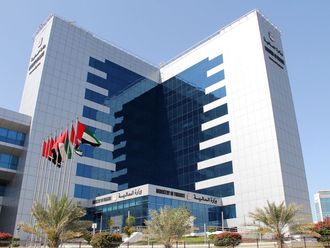Dubai: Strong capitalisation levels, a high composition of deposit funding and strong earnings are expected to shield GCC banks against cyclical risks, according to rating agency Standard & Poor’s.
As of July 20, 2018, S&P’s outlooks on 19 of the 24 banks they rate in the GCC are stable. The remaining outlooks are negative, and are primarily on banks in Qatar because of the potential impact of the boycott on the government’s creditworthiness and capacity to support the banking system, as well as pressure on Qatari banks’ funding profiles, asset quality, and profitability indicators.
The rating agency’s assessment of risk exposures in the GCC is a negative factor for one-third of the region’s banks it rates. However, the rating agency said, looking at risk exposures alone does not provide a complete picture of the rating impact.
“We usually combine our risk assessment with our views on banks’ capital and earnings capacity, and the extent that they offer an effective cushion against accumulated risks. This combined assessment is positive or neutral for the majority of rated banks, and negative for only four. The strong quantitative and qualitative capitalisation of rated GCC banks largely explains this,” said Mohammad Damak, senior director of Financial Services at S&P Global Ratings.
The average risk-adjusted capital (RAC) ratio of the rated banks reached 11.8 per cent at year-end 2017 and banks’ capital bases comprise mainly common equity instruments.
Gulf banks also continued to display healthy earnings last year, with the return on assets averaging 1.5 per cent.
Although GCC banks are heavily deposit funded and well-capitalised by global standards, the cyclical nature of the economies they operate in carries greater concentration risk on both the asset and liabilities sides of the balance sheet than other global investment-grade banks.
Concentrations, according to S&P, mirror the narrow nature of GCC economies and the dominance of a few large private-sector groups or government-related entities (GREs). The 20 largest loans averaged about 30 per cent of the loan books of books at the end of 2017. Such exposures leave rated Gulf banks vulnerable to unexpected events.
Concentration by economic sector is also high and a source of banks’ exposure to cyclical risk. The most prominent example is that of Gulf banks lending to the construction and real estate sectors, which accounted for about 21 per cent of total exposures on average at year-end 2017 — ranging from an extremely high 49 per cent to a mere 1.5 per cent on a bank-to-bank basis.
As the banks continue to operate in the region’s less-supportive economic environment, S&P analysts expect lending growth to remain subdued and asset quality indicators to deteriorate slightly.
IFRS 9 impact
“We expect GCC banks’ earnings will stabilise at lower levels in 2018-2019 due to the combination of higher provisions because of International Financial Reporting Standard 9 (IFRS 9), the introduction of value-added tax, and muted loan growth. But we think banks will continue to generate sufficient returns to cover their risks. This, among other factors, is the reason why most of our outlooks on rated GCC banks are stable,” said Damak.
The implementation of IFRS 9 according to S&P will result in a higher, but still manageable cost of risk for Gulf banks. On average, the additional provisions needed represented 1.1 per cent of the total loans of rated banks as of January 1, 2018, or 5.3 per cent of their total adjusted capital.
“The highest impact was in Qatar and the lowest in Kuwait. The main reason for the overall limited impact is [the] banks’ conservative approach to loan loss provisioning, which is also sometimes the result of conservative regulatory requirements, such as in Kuwait, where banks are required to set aside a flat provision on their performing on- and off-balance-sheet exposures,” said Damak.












